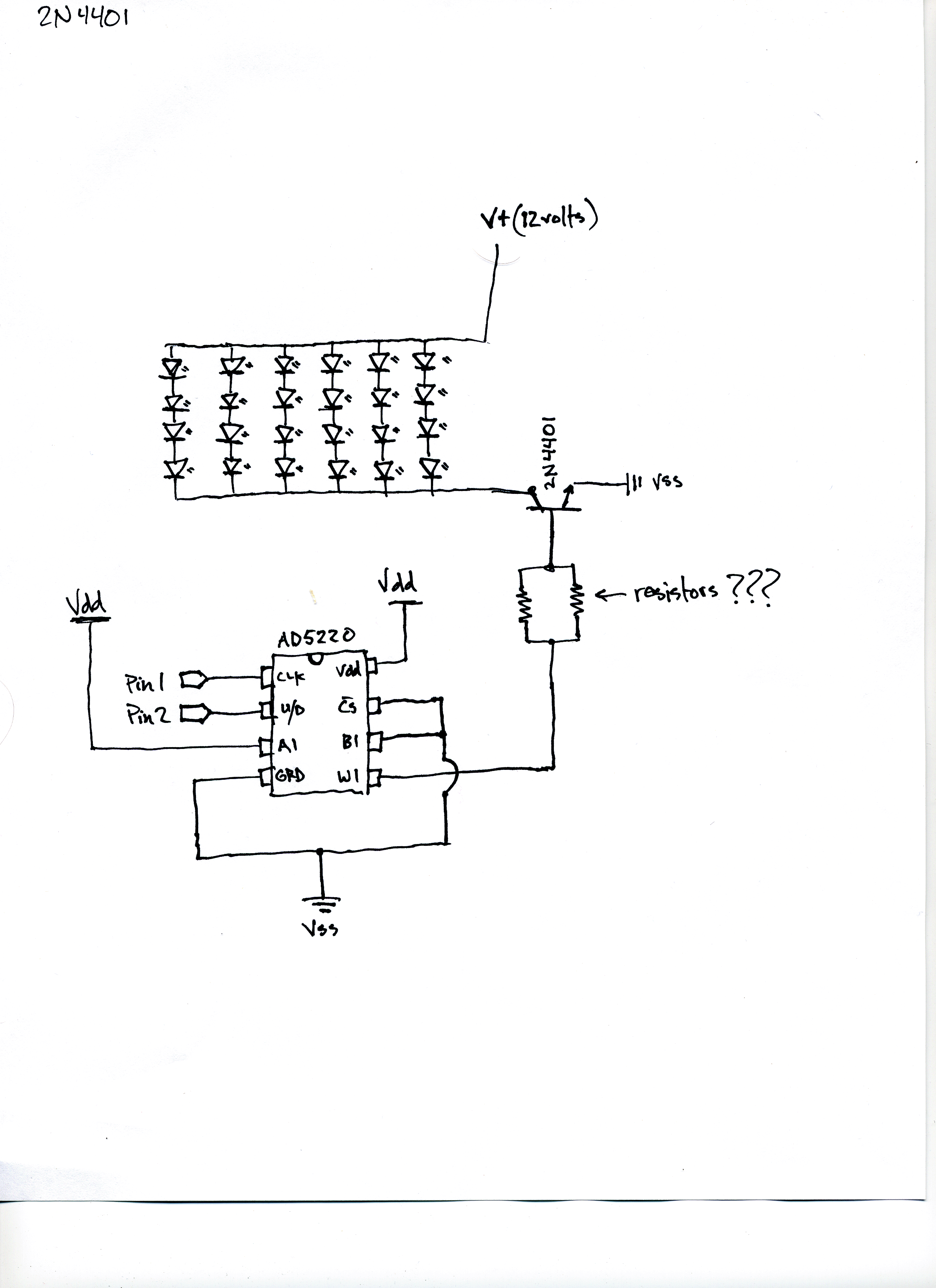circuit question (bs2)
i am working on a project and i want to get some feedback please. i am trying to light up six individual light boxes with leds inside and i also want to be able to·vary the light output with a soid state pot so the light boxes can glow brighter and less brighter allmost like they are breathing... each box will contain 4 super bright leds that take· about 3volts and 30 ma. i figured that there are too many leds to run in serial so i think i should use a combination of serial and paralle. if i run 4 leds in serial and the group of six in parallel it will consume 12volts at 180ma. is this correct??? also is there an easy·way to determin how much resistence to put betwwen the digi pot and the transistor... this is just one part of the project so i will probably have more questions in the future. thanks for the help it is greatly appreciated.
ps. there is an attachment of my circuit (sorry its hand written i am quicker at hand written design)
also i dont know if it makes a difference but there will be 4 circuits like this one in the project(each circuit is a different color led, white, red, yellow, blue)
ps. there is an attachment of my circuit (sorry its hand written i am quicker at hand written design)
also i dont know if it makes a difference but there will be 4 circuits like this one in the project(each circuit is a different color led, white, red, yellow, blue)



Comments
2. It looks like the transistor can give you a variable 'added' resistance, to vary the brightness.
3. LED's are a current activated device, and quite non-linear. Thus 5 mA probably won't light at all, 10 mA lights dim, 15 mA lights almost full, and 20 mA full on. The 30 mA is probably a max current before it burns out. You'll need to experiment a little to find out how to control them.
Also, you need to know the forward voltage and rated current of your LEDs to specify the correct resistor.· Typically you want to control the current to something less than the rated current.· Say the rated current is 20mA, you'll want to choose a resistor that will limit the current to maybe 15 to 18 mA.· R = (Vin - Vf)/I· (for series LEDs Vf is the sum of the individuals)
Different LEDs have different forward voltages.· Read the specs.· Typically reds, yellows and cheap LEDs Have a Vf of 1.5 to 2.0 volts.· High brightness whites, blues, and greens run in the 3.3 to 3.8 volt range (in which case your 12 volts won't be enough).
A fellow by the name of Don Klipstein maintains an informational web site (for his own personal enjoyment) which has a wealth of information about LEDs.· Google Don Klipstein LED.
Chris Isaacson
Using this scheme will make it difficult to control the brightness of the LEDs.
My suggestion is to use a MAX7219. Parallax has example code, and I also have example code.
With the 7219 you dont need only one resistor for all the LEDs and you control the brightness by writing a brightness value to the IC. The 7219 spec sheet is a little intimidating, but as mentioned I have example code that should get you running quickly. The example code has clear explanations of how to use and manipulate the LED brightness.
http://forums.parallax.com/showthread.php?p=464329
Write back if you have questions.
As Bean posted, PWM might be the way to go.
Can you give an indication of the range of brightness and over what period.
For example, you might want to go from completely off to full bright over 3 seconds.
Knowing the above will help to come up with a solution.